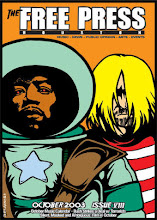Up In the Air

Up In the Air is a sublime meditation on life. This third film from Jason Reitman proves he has the chops of a major director but that was already apparent on his first film Thank You For Smoking. Up In the Air deals with a middle aged dude going through a life crisis with subplots revolving around his family and what few friends he has.
George Clooney as Ryan Bingham has played this kind of role before most notably in the far more serious Michael Clayton. There's even a shot here where Clooney gazes with the look of self recognition right into the camera, although it's much shorter in duration than the closing shot of Michael Clayton. Bingham works for a firm that outsources its employees to other companies in order to terminate said other company's employees. His living arrangements are spartan and although he maintains a small apartment he's on the road the majority of the time.
Am I the only one that occasionally refers to this film as The Air Up There, which is a 1994 basketball film starring Kevin Bacon? Non sequiturs aside, Up In the Air works best at the beginning and middle while the last act tends to ground itself with the resolution of Bingham's problems in a rather prosaic manner.
Rather than reveal specifics about the last act that would spoil plot twists allow me to point out the areas of Up In the Air that really work for me. The tone of corporate indifference to the feelings of their workers are best expressed in what is for me the best scene where Clooney fires J.K. Simmons (in a cameo) and goes from being an asshole to making the guy relate to him. Clooney explains how Simmons needs to get back in touch with his true desires that he sublimated when he first entered the corporate climate. Also beautiful footage of American cities as seen from thousands of feet in the air punctuate the film from time to time. Supporting performances are fine with notable finesse coming from Vera Farmiga and Anna Kendrick.











